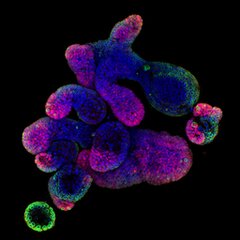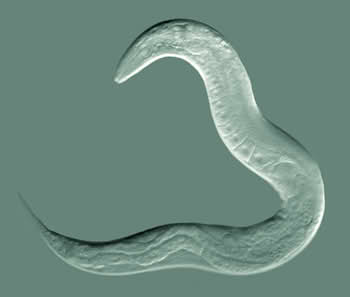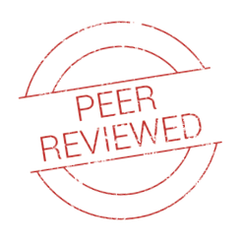KEYWORDS
Nutraceuticals
Alternative models
C. elegans
Zebrafish
In vitro
3Rs principle
Abstract
The use of animals, in particular mammals, in biomedical research has been an indispensable tool for evaluating the efficacy and toxicity of bioactive compounds. However, growing ethical and scientific concern has driven the development of alternative methodologies. This article presents a critical view on the current role of animal models, the advancement of in vitro technologies, and the growing use of alternative models to mammals, such as Caenorhabditis elegans (C. elegans) and Danio rerio (zebrafish), which present fewer ethical concerns regarding sensitivity. Consequently, the objective of the present article is to highlight how these tools are integrated into a modern, ethical, and effective strategy for evaluating the biological effects of nutraceuticals, aligning with the 3Rs principle (Replacement, Reduction, and Refinement).
The 3Rs principle as an ethical framework and catalyst for innovation
The market for nutraceuticals, products at the intersection of nutrition and pharmaceuticals, has experienced exponential growth. As a result, consumers are actively seeking evidence-based solutions to improve their health and well-being (1). However, this demand, places a significant burden on the scientific community regarding the need to rigorously demonstrate the efficacy and safety of these bioactive compounds. To meet this challenge, animal models, particularly rodents, have historically served as the cornerstone for preclinical evaluation in nutrition research, enabling the study of complex biological interactions within a complete living system (2). Despite their utility, the use of experimental animals is subject to growing ethical scrutiny and scientific limitations, such as physiological differences between species that can compromise the extrapolation of results to humans (3). In response to these concerns, the 3Rs principle, first proposed by William M. S. Russell and Rex L. Burch in 1959, has become the ethical and legal framework guiding modern research (4). This principle is not a prohibition but rather a strategic guideline that promotes Replacement by encouraging the use of methods that do not require animals like cell cultures or computational models, Reduction by decreasing the number of animals used to obtain a given level of information through optimized experimental design, and Refinement by improving housing, handling, and experimental procedures to minimize any potential pain, suffering, or distress to the animals. Ultimately, adherence to the 3Rs is not only a moral obligation but also a catalyst for innovation, as it drives scientists to develop and adopt more sophisticated, efficient, and, in many cases, more relevant methodologies for human biology. This shift encourages the creation of a new testing paradigm designed not just to reduce animal use, but to generate more predictive data faster and more cost-effectively, directly addressing the limitations of traditional models and heralding a new era in the validation of bioactive compounds.

Advances in in vitro technologies: from 2D cultures to complex cellular models
At the forefront of this innovation, advances in in vitro technologies represent one of the most solid pillars of the Replacement principle. For decades, research relied on monolayer (2D) cell cultures, a system that, while essential for foundational discoveries, does not accurately mimic the complex three-dimensional architecture or the intricate cell-to-cell and cell-to-matrix interactions found in human tissues (5). However, in recent years, science has taken a qualitative leap towards complex cellular models that offer unprecedented biological fidelity (6). Among these, two key technologies stand out. On one hand, 3D cultures, such as spheroids and organoids, allow cells to grow in three dimensions, self-organizing into structures that mimic an organ's microanatomy (7). For example, intestinal organoids develop crypts and villi like those of the human intestine, making them an excellent platform for studying the absorption of nutraceuticals, their impact on the intestinal barrier, or their interaction with the microbiota (8).

Intestinal organoids.
On the other hand, organ-on-a-chip technology is a cutting-edge field that uses microfluidics to create tiny channels lined with living human cells (9). These chips simulate organ-level structure and function, including mechanical stress like peristalsis in the gut and fluid flow like blood flow. It is even possible to connect different organs-on-a-chip. For instance, a gut-liver-on-a-chip, to study the metabolism of a nutraceutical after its absorption, providing systemic data that were previously only possible in a whole organism (10). Collectively, these advanced systems enable a more in-depth investigation of the mechanisms of action of nutraceuticals, allowing researchers to assess their bioavailability, anti-inflammatory and antioxidant effects, and their modulation on specific metabolic pathways with much greater human relevance than traditional 2D models. This significantly enhances the prediction of human responses and helps bridge the translational gap between laboratory findings and clinical success.

Organ-on-a-chip platform.
C. elegans and zebrafish as a bridge between cellular studies and mammalian trials
To complement the crucial data gathered from in vitro models, researchers use alternative animal models which, being lower on the phylogenetic scale compared to mammals, allow for the investigation of complex, multi-system interactions in a living organism with significantly reduced ethical dilemmas. This is where models such as the nematode Caenorhabditis elegans (C. elegans) and Danio rerio (zebrafish) have gained enormous interest. They offer a perfect balance between biological complexity and experimental manageability, serving as a valuable bridge between cellular studies and mammalian trials (11). On one hand, C. elegans, a small, transparent worm just 1 mm long, is a powerhouse in biomedical research due to advantages such as its short life cycle of 2-3 weeks, its fully sequenced genome, and its high genetic homology with humans in key pathways of metabolism, oxidative stress, and aging (12). Its transparency allows for non-invasive observation of cellular processes in real-time, making it an ideal tool for evaluating compounds with anti-aging potential or studying the modulation of fat accumulation in a rapid, large-scale manner.

Caenorhabditis elegans (C. elegans).
On the other hand, the zebrafish, as a vertebrate, shares even greater genetic and physiological homology with humans (approximately 70% of human genes have an ortholog in the zebrafish). The rapid external development of its transparent embryos allows for the real-time visualization of organ formation and compound effects, making it an exceptional model for the toxicology and safety assessment of nutraceuticals (13). Furthermore, models of human diseases such as obesity, inflammation, and liver steatosis have been developed in zebrafish, enabling the evaluation of nutraceutical efficacy in a relevant pathological context (14). The strategic use of these models therefore allows for the screening of promising compounds, the dismissal of toxic ones, and the selection of only the most viable candidates to advance to more complex and costly research phases, such as rodent or human studies, thus embodying the principles of Reduction and Refinement. This intelligent filtering of compounds is a game-changer for nutraceutical R&D. It not only conserves resources and minimizes reliance on mammalian testing but also significantly strengthens the quality of data packages submitted for regulatory review, ultimately increasing the confidence in a product's final health claims.

Zebrafish.
The strategic integration of models as a new validation paradigm
The true strength of these new methodologies lies not in the isolated application of any single model, but in their strategic and synergistic integration. Relying on one model alone, whether a cellular assay or a specific organism can be limiting, as it fails to capture the full journey of a bioactive compound through metabolism, absorption, and systemic distribution, potentially leading to misleading results. Therefore, the most innovative and reliable validation frameworks are built upon a tiered, integrated approach. Leading research centres are increasingly adopting this sequential strategy for nutraceutical evaluation, establishing a new best practice for preclinical research. A typical workflow begins with large-scale, high-throughput screening in complex in vitro models to identify compounds with promising biological activity in specific assays, for instance, demonstrating antioxidant or anti-inflammatory potential at a cellular level. Following this initial screen, the most promising candidates advance to validation in whole-organism alternative models, such as C. elegans or zebrafish larvae. In this crucial phase, researchers can confirm the initial findings in a living system and assess key parameters like bioavailability and toxicity. This sequential and multifaceted approach acts as a rigorous filter, ensuring that only compounds with a robust safety and efficacy profile are considered for the final, most costly and ethically sensitive stages of mammalian experimentation. Ultimately, this strategy yields numerous advantages. It not only significantly accelerates the pace of research by quickly eliminating non-viable compounds but also drastically reduces the associated costs. Crucially, it provides a much stronger and more mechanistic evidence base before making the leap to human clinical trials. It is a model where ethical responsibility and scientific excellence are mutually reinforcing, creating robust and superior alternatives for assessing the biological efficacy of nutraceuticals.
Conclusion
In conclusion, the paradigm for validating the biological efficacy of nutraceuticals is undergoing a profound and necessary transformation. This evolution is driven by the dual imperatives of adhering to the ethical framework of the 3Rs and the scientific need for more predictive, human-relevant data. The journey from traditional animal testing to a more sophisticated, integrated approach is now well-established, moving beyond theoretical concepts to practical application. The synergistic use of advanced in vitro technologies, such as 3D organoids and organ-on-a-chip platforms, complemented by powerful yet ethically-advantaged whole-organism models like C. elegans and zebrafish, creates a comprehensive, pre-mammalian picture of a compound's efficacy and safety. This tiered, strategic pipeline not only minimizes and optimizes the use of mammalian models but also fundamentally improves the quality and predictive accuracy of preclinical research.
This enhancement is critical, as it allows for more robust, cost-effective screening that provides deep mechanistic insights much earlier in the development process. By understanding how a compound works at both cellular and systemic levels, researchers can build a stronger case for its potential, helping to mitigate the high attrition rates often seen in later-stage human trials. Looking forward, this robust validation framework will be crucial for the industry to meet both regulatory demands for substantiated health claims and growing consumer calls for transparent, trustworthy products. As the demand for evidence-based nutraceuticals grows, embracing this integrated model of validation is no longer just an alternative, but the new standard for efficient, innovative, and ethically responsible research in nutrition and health.
References and notes
- Nasri H, Baradaran A, Shirzad H, Kopaei MR. New concepts in nutraceuticals as alternative for pharmaceuticals. Int J Prev Med. 2014;5(12). https://pmc.ncbi.nlm.nih.gov/articles/PMC4336979/#sec1-4
- Baker DH. Animal models in nutrition research. In: Journal of Nutrition. 2008. https://www.sciencedirect.com/science/article/pii/S0022316622095566#:~:text=Numerous%20examples%20are%20cited%20where,various%20animal%20species%20are%20discussed
- Akhtar A. The Flaws and Human Harms of Animal Experimentation. Cambridge Q Healthc Ethics. 2015;24(4). https://www.cambridge.org/core/journals/cambridge-quarterly-of-healthcare-ethics/article/flaws-and-human-harms-of-animal-experimentation/78D1F5E6B65AE7157B7AA85FF3F06017
- Tannenbaum J, Bennett BT. Russell and Burch’s 3Rs then and now: The need for clarity in definition and purpose. J Am Assoc Lab Anim Sci. 2015;54(2). https://pmc.ncbi.nlm.nih.gov/articles/PMC4382615/
- Li Y, Kilian KA. Bridging the Gap: From 2D Cell Culture to 3D Microengineered Extracellular Matrices. Adv Healthc Mater. 2015;4(18). https://pmc.ncbi.nlm.nih.gov/articles/PMC4780579/
- Urzì O, Gasparro R, Costanzo E, De Luca A, Giavaresi G, Fontana S, et al. Three-Dimensional Cell Cultures: The Bridge between In Vitro and In Vivo Models. Vol. 24, International Journal of Molecular Sciences. 2023. https://www.mdpi.com/1422-0067/24/15/12046
- Yang S, Hu H, Kung H, Zou R, Dai Y, Hu Y, et al. Organoids: The current status and biomedical applications. Vol. 4, MedComm. 2023. https://pmc.ncbi.nlm.nih.gov/articles/PMC10192887/
- Dotti I, Salas A. Potential Use of Human Stem Cell-Derived Intestinal Organoids to Study Inflammatory Bowel Diseases. Vol. 24, Inflammatory Bowel Diseases. 2018. https://www.mendeley.com/catalogue/29c08581-838a-3cde-8561-c46638253c9e/
- R N, Aggarwal A, Sravani AB, Mallya P, Lewis S. Organ-On-A-Chip: An Emerging Research Platform. Vol. 19, Organogenesis. 2023. https://pmc.ncbi.nlm.nih.gov/articles/PMC10653779/
- Choe A, Ha SK, Choi I, Choi N, Sung JH. Microfluidic Gut-liver chip for reproducing the first pass metabolism. Biomed Microdevices. 2017;19(1). https://www.mendeley.com/catalogue/00fb6cd4-751f-3929-91ee-c6bab92520b8/
- Strange K. Drug discovery in fish, flies, and worms. ILAR J. 2016;57(2). https://pmc.ncbi.nlm.nih.gov/articles/PMC5886320/
- Ha NM, Tran SH, Shim YH, Kang K. Caenorhabditis elegans as a powerful tool in natural product bioactivity research. Vol. 65, Applied Biological Chemistry. 2022. https://applbiolchem.springeropen.com/articles/10.1186/s13765-022-00685-y
- Adhish M, Manjubala I. Effectiveness of zebrafish models in understanding human diseases—A review of models. Vol. 9, Heliyon. 2023. https://pmc.ncbi.nlm.nih.gov/articles/PMC10025926/
- Seth A, Stemple DL, Barroso I. The emerging use of zebrafish to model metabolic disease. Vol. 6, DMM Disease Models and Mechanisms. 2013. https://pmc.ncbi.nlm.nih.gov/articles/PMC3759328/



